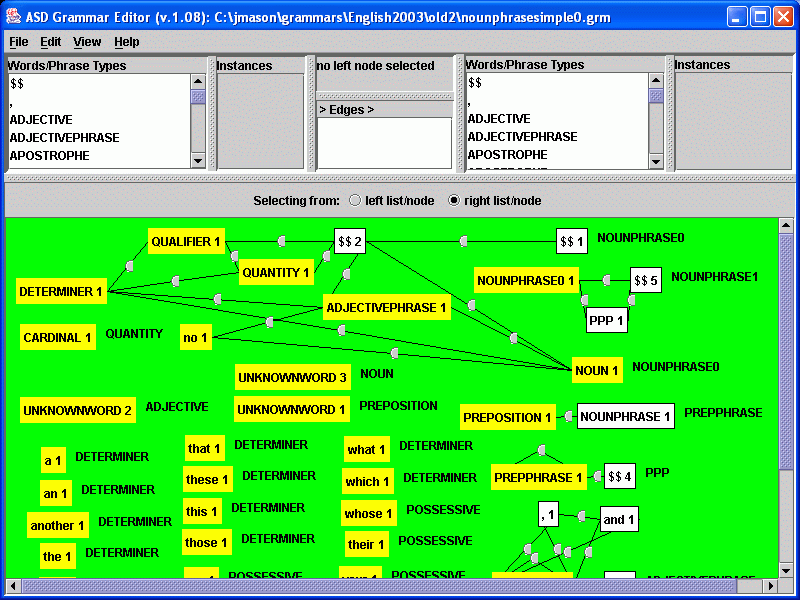







Augmented
Syntax Diagrams (ASDs) provide a way to represent grammars of
natural
languages as directed graphs -- that is, as networks of nodes
and
edges.
Nodes
represent instances (or usages) of words and phrase types in a
language
such as English. Edges link nodes together to indicate
how
instances of words and phrase types can follow one another to make up
phrases,
clauses, and sentences in the language. The image below
shows
part of an example ASD grammar as viewed with the graphical ASDEditor
tool
that is available at this site (See the Documents and
Software
links above.). Follow this link for other images
of ASDEditor. A demonstration version of the
ASDEditor can be found by following the Demos link above.
Augmented Syntax Diagrams can also be used to represent decision
networks. In that case, nodes represent values of
decision variables and edges
link nodes together in conjunction
(and) relationships.
Alternative links from a node represent disjunction (or) relationships between successor
nodes of that node. See the News, Software and Documents links
above for details.
This site contains tools, implemented in Java, for displaying and editing ASD grammars, for parsing typewritten utterances with them, and for searching them when they are used to represent decision networks. It also contains some examples. One example in particular, CardWorld, will be used to demonstrate how models of various aspects of English syntax and semantics can be used to build a working model of an agent that understands English in a restricted pragmatic environment. Additional examples will be added to this site from time to time, along with further notes and tutorial materials about ASDs.
